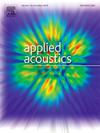Development of a code-switched Hindi-Marathi dataset and transformer-based architecture for enhanced speech recognition using dynamic switching algorithms
IF 3.4
2区 物理与天体物理
Q1 ACOUSTICS
引用次数: 0
Abstract
Especially in low-resource languages like Hindi and Marathi, code-switching presents major difficulties for automatic speech recognition (ASR). This work provides a 450-hour annotated dataset of Hindi-Marathi code-switching, including tag-switching, intra-sentential, and inter-sentential patterns. We augment a transformer-based ASR architecture with dynamic switching algorithms using wav2vec2 and a reinforcement learning-based approach known as Q-Learning, thereby dynamically optimizing language transition points.
With a Word Error Rate (WER) of 0.2800 and a Character Error Rate (CER) of 0.2400, the proposed model beats conventional HMM-GMM and RNN-based ASR systems. Combining reinforcement learning for dynamic code-switching with transformer-based self-supervised learning demonstrates enhanced accuracy and flexibility.
Comparative analysis shows the improvements relative to heuristic methods, Kaldi baselines, and pre-trained monolingual models. This work underscores the significance of hybrid architectures, dynamic algorithms, and sophisticated acoustic modeling in code-switched speech recognition, thereby offering a comprehensive framework for multilingual automatic speech recognition. The results have a major impact on the evolution of ASR in linguistically diverse and economically constrained environments.
开发代码切换印地语-马拉地语数据集和基于变压器的架构,利用动态切换算法增强语音识别能力
特别是像印地语和马拉地语这样的低资源语言,代码转换给自动语音识别(ASR)带来了很大困难。这项研究提供了一个 450 小时的印地语-马拉地语代码切换注释数据集,包括标签切换、句内切换和句间切换模式。我们利用 wav2vec2 动态切换算法和基于强化学习的 Q-Learning 方法增强了基于变压器的 ASR 架构,从而动态优化了语言转换点。比较分析表明,与启发式方法、Kaldi 基线和预训练的单语模型相比,该模型有了很大改进。这项工作强调了混合架构、动态算法和复杂声学建模在代码切换语音识别中的重要性,从而为多语言自动语音识别提供了一个全面的框架。这些成果对在语言多样化和经济受限的环境中发展自动语音识别技术具有重大影响。
本文章由计算机程序翻译,如有差异,请以英文原文为准。
求助全文
约1分钟内获得全文
求助全文
来源期刊

Applied Acoustics
物理-声学
CiteScore
7.40
自引率
11.80%
发文量
618
审稿时长
7.5 months
期刊介绍:
Since its launch in 1968, Applied Acoustics has been publishing high quality research papers providing state-of-the-art coverage of research findings for engineers and scientists involved in applications of acoustics in the widest sense.
Applied Acoustics looks not only at recent developments in the understanding of acoustics but also at ways of exploiting that understanding. The Journal aims to encourage the exchange of practical experience through publication and in so doing creates a fund of technological information that can be used for solving related problems. The presentation of information in graphical or tabular form is especially encouraged. If a report of a mathematical development is a necessary part of a paper it is important to ensure that it is there only as an integral part of a practical solution to a problem and is supported by data. Applied Acoustics encourages the exchange of practical experience in the following ways: • Complete Papers • Short Technical Notes • Review Articles; and thereby provides a wealth of technological information that can be used to solve related problems.
Manuscripts that address all fields of applications of acoustics ranging from medicine and NDT to the environment and buildings are welcome.
 求助内容:
求助内容: 应助结果提醒方式:
应助结果提醒方式:


